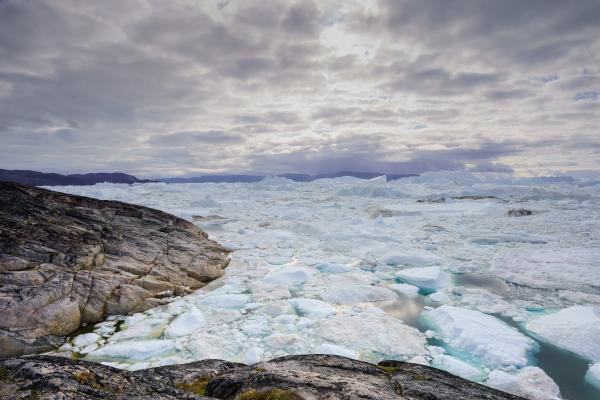Greenland's Bedrock Shifts Reveal Surprising Summer Meltwater Storage

In a recent study published in Nature, an international research team including Michael Bevis and C.K. Shum—professors at The Ohio State University's School of Earth Sciences and principal investigators at the Byrd Center—has uncovered surprising evidence that the Greenland ice sheet stores far more meltwater during summer than previously believed.
Researchers used 22 Global Navigation Satellite System (GNSS) stations—part of the Greenland GNSS Network (GNET)—to measure tiny vertical shifts in the bedrock. These subtle movements reveal that the underlying rock subsides under the added weight when meltwater accumulates on or within the ice sheet. By tracking these seasonal up-and-down motions, scientists can pinpoint where and when meltwater storage peaks and how long it stays in the ice before eventually draining into the ocean.
This discovery shows how the Greenland ice sheet acts like a giant sponge in summer, temporarily holding meltwater for weeks to months. This affects how much water is ultimately released and contributes to sea-level rise.
The study challenges some long-held assumptions about runoff. Popular climate models may underestimate meltwater runoff for exceptionally warm years. By incorporating these observations, scientists can better predict the ice sheet's behavior under future climate scenarios.
The team's findings are crucial for understanding the complex water flow network within the ice, including surface melt lakes, englacial water channels, and subglacial drainage systems. Their research highlights that in colder regions and the west and northeast of Greenland, water can remain stored longer—up to nine weeks—while drainage in southern Greenland can happen much more quickly. According to the study, basal water, which collects at the ice–bedrock interface, also plays a key role in meltwater drainage by influencing how quickly meltwater is ultimately routed to the ocean.
The study provides fresh evidence that continuous GPS monitoring of the ice sheet can serve as a unique tool to calibrate climate models and improve our understanding of the fate of meltwater in a warming Arctic.
With these insights, researchers hope to refine projections of future melt behavior and its impact on global sea-level rise—an imperative step in preparing for the realities of a changing climate.
To learn more about the study visit "Vertical bedrock shifts reveal summer water storage in Greenland ice sheet."
Related Stories:
- Greenland Ice Sheet Stores Hidden Water Throughout the Melt Season, EOS, December 2024
